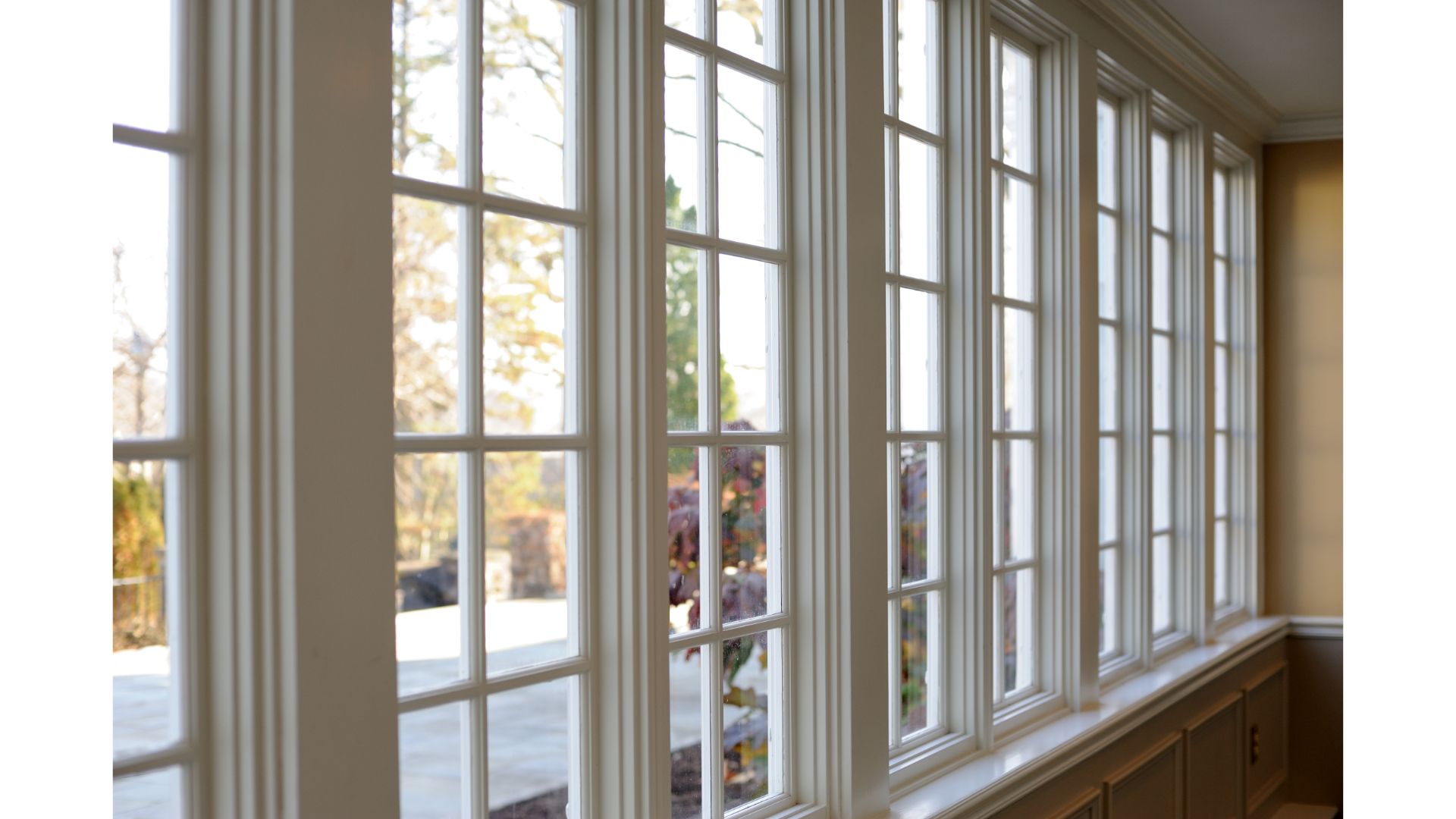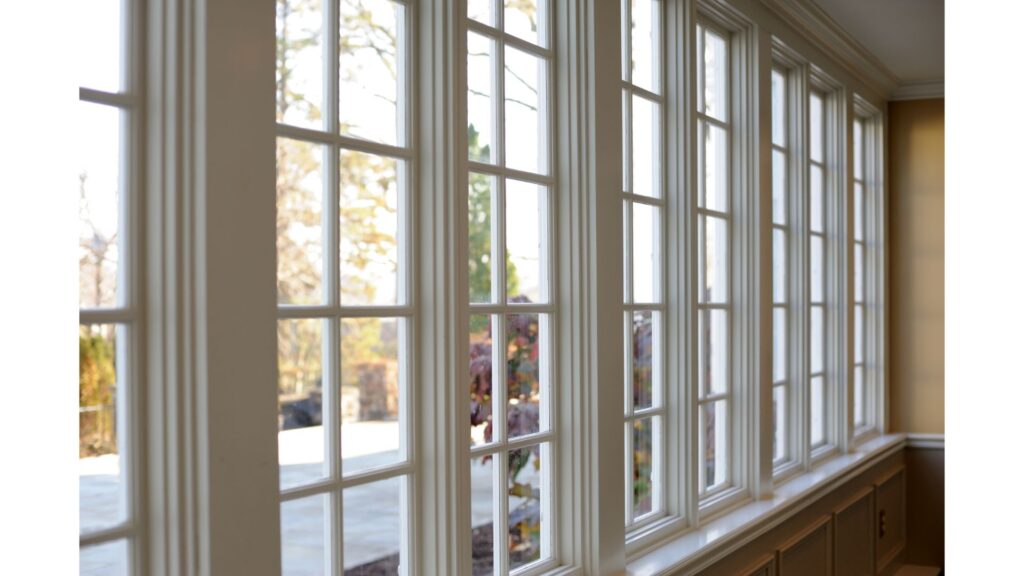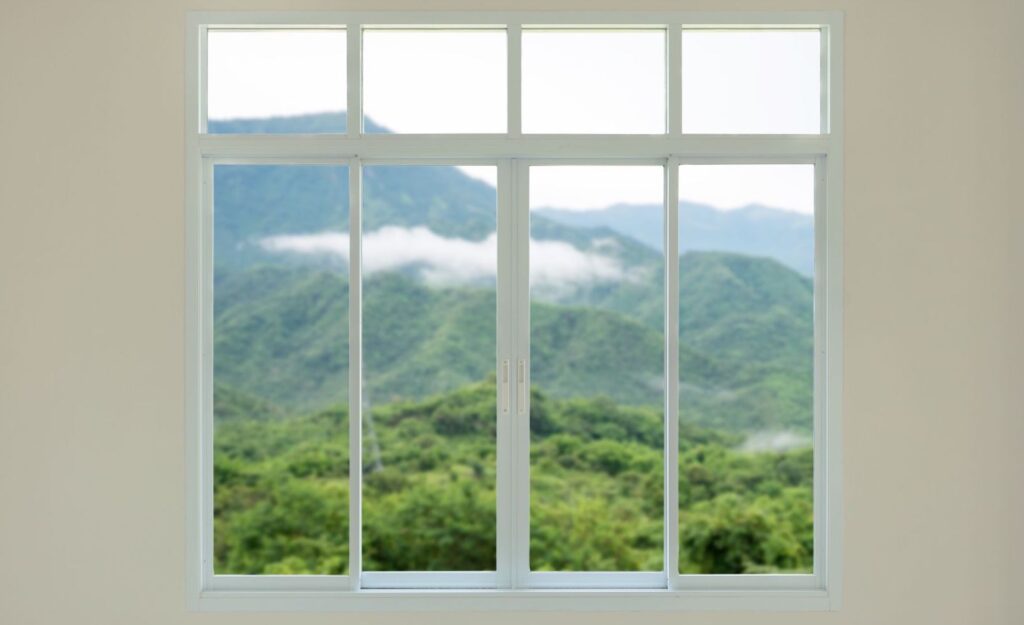
A Detailed Look at Vinyl vs. Wood Replacement Windows
When it comes to choosing replacement windows for your home, the debate often comes down to vinyl vs. wood. Each material has its pros and cons, and the best choice for you will depend on various factors, including your budget, climate, and desired aesthetic. This blog post will offer a detailed comparison of vinyl and wood replacement windows to help you make an informed decision.
Overview of Vinyl and Wood Windows
Vinyl Windows
Vinyl windows are a popular choice for many homeowners due to their affordability, low maintenance, and good insulation properties. They are made from PVC (polyvinyl chloride), which offers excellent resistance to heat transfer, making vinyl windows an energy-efficient choice.
When discussing vinyl windows, it’s crucial to consider the types of buildings they are most suited for and other pertinent information.
Suitable Buildings for Vinyl Windows
Vinyl windows are an excellent choice for a variety of building types, including residential homes, office buildings, and rental properties. Their durability, low maintenance requirements, and cost-effectiveness make them particularly appealing for properties where cost and ease of maintenance are priorities.
Key Information About Vinyl Windows
Vinyl windows provide commendable insulation, contributing to the energy efficiency of a building. Their construction minimizes the transfer of heat, helping to keep indoor spaces warm during the winter and cool during the summer. This thermal insulation contributes to lower energy bills, a significant advantage for both residential and commercial properties. The frames of vinyl windows are typically multi-chambered, improving their insulation and durability.
Additionally, vinyl windows are known for their resistance to moisture, making them a good option for humid climates or areas prone to heavy rainfall. They do not rot or warp due to moisture, ensuring longevity and consistent performance.
As per the U.S. Department of Energy, vinyl windows are generally superior to wood and aluminum windows in terms of insulation. The Department highlights that vinyl windows with insulated glass and a low-E coating can significantly improve the energy efficiency of a building.

Wood Windows
Wood windows offer a timeless and classic look that many homeowners desire. They can be painted or stained to match your home’s interior and exterior décor, and they offer excellent insulation properties. However, they require more maintenance compared to vinyl windows.
When delving into the world of wood windows, it’s important to consider the types of buildings they suit and gather detailed information about their features.
Suitable Buildings for Wood Windows
Wood windows offer a classic, timeless aesthetic that pairs well with historic and luxury homes. Their natural look and ability to be painted or stained any color make them a flexible choice for those who prioritize aesthetics in their window selection. They can be seen in various settings, including heritage homes, rustic cabins, and upscale estates, where their elegant appearance enhances the property’s overall value.
Key Information About Wood Windows
While wood windows necessitate regular maintenance to prevent issues like rot and warping, their aesthetic appeal and insulative properties make them a desirable choice. Wood provides natural insulation, helping to maintain a building’s internal temperature and contribute to its overall energy efficiency. However, regular maintenance is crucial to ensuring their longevity and performance.
Wood windows can be customized more easily compared to other materials. They can be carved, painted, or stained to suit the architectural style of any building, offering a higher level of customization that is especially valuable in historical or high-end properties.
According to the National Park Service, U.S. Department of the Interior, wood windows can last years if well-maintained, and their historic and aesthetic contribution to buildings often makes them worth the effort of preservation and repair.

Cost Comparison
Vinyl Windows:
- Price: Generally more affordable.
- Maintenance Costs: Minimal; require occasional cleaning with soap and water.
- Long-Term Value: Excellent, especially high-quality vinyl windows.
Wood Windows:
- Price: Generally more expensive.
- Maintenance Costs: Higher; require regular painting or staining to prevent rot and decay.
- Long-Term Value: Good, but can be cost-prohibitive for some homeowners.
Aesthetic Appeal
Vinyl Windows:
- Appearance: Modern and sleek, but some homeowners prefer the natural look of wood.
- Customization: Available in various styles and colors but has limitations in custom designs.
Wood Windows:
- Appearance: Offers a classic, high-end look.
- Customization: Highly customizable in terms of size, shape, and color.
Durability and Maintenance
Vinyl Windows:
- Durability: Resistant to rot, corrosion, and termites.
- Maintenance: Very low; no need for painting or staining.
Wood Windows:
- Durability: Can last for decades, but susceptible to rot, insects, and warping.
- Maintenance: Require regular maintenance to keep them looking fresh and to prevent decay.
Energy Efficiency
Both vinyl and wood windows offer good energy efficiency, providing they are of high quality and installed correctly. They both have good insulation properties, helping to keep your home warm in winter and cool in summer.

Environmental Considerations
Vinyl Windows:
- Less eco-friendly as they are made from plastic and are non-biodegradable.
- Can be recycled, but the process is not as straightforward as wood.
Wood Windows:
- More eco-friendly as wood is a natural, renewable resource.
- Easier to recycle and biodegradable.
The choice between vinyl and wood replacement windows depends on your specific needs and preferences. Vinyl windows are affordable, durable, and low-maintenance, making them a practical choice for many homeowners. On the other hand, wood windows offer a beautiful, classic look and are more eco-friendly, but they come with higher costs and maintenance needs. Consider all these factors and evaluate what is more important for you in the long term as you make your decision.
Installation Considerations
Another important factor to consider in the vinyl vs. wood window debate is the installation process. The installation of replacement windows should always be handled by professionals to ensure they are properly fitted and insulated. Incorrect installation can lead to a myriad of problems, such as air leaks, water damage, and poor insulation.
Vinyl Windows:
- Ease of Installation: Generally easier and faster to install, leading to lower installation costs.
- Flexibility: More adaptable to uneven or non-square openings.
Wood Windows:
- Installation: May require more time and precision in the installation process.
- Adjustments: May need more adjustments during installation to fit properly.

Climate Considerations
Climate is a crucial factor in determining the best material for your replacement windows. Some materials perform better in certain climates, providing optimum energy efficiency and durability.
Vinyl Windows:
- Climate Suitability: Perform well in various climates.
- Temperature Fluctuations: Less affected by temperature changes, providing consistent insulation.
Wood Windows:
- Climate Suitability: May not be suitable for areas with high humidity and rainfall as they are susceptible to rot and warping.
- Temperature Fluctuations: Can expand and contract with temperature changes, potentially leading to gaps and reduced insulation.
Warranty and Long-Term Investment
Vinyl Windows:
- Warranty: Often come with extensive warranties due to their durable nature.
- Long-Term Investment: Offers a good return on investment due to lower costs and durability.
Wood Windows:
- Warranty: Warranties may be shorter and more limited compared to vinyl windows.
- Long-Term Investment: Higher initial costs, but adds significant value to the property.
Taking all these factors into account will guide you in making an informed decision regarding the best material for your replacement windows. Assess your budget, aesthetic preferences, climate, and long-term expectations. Consult with window installation professionals, and don’t hesitate to ask for their opinions and insights. They have the experience and knowledge to help you choose the right windows for your home.
In the final analysis, both vinyl and wood windows have their own set of advantages and disadvantages. Your individual needs and circumstances will determine the best choice for your home improvement project. Remember that quality should be a priority in your decision, as well-made windows, whether vinyl or wood, will save you money and trouble in the long run.

Cost Comparison: Vinyl vs. Wood Windows
When it comes to the cost of replacement windows, there’s a noticeable difference between vinyl and wood materials. Let’s delve into the average costs you can expect for each type, keeping in mind that prices can vary based on factors like size, manufacturer, and additional features.
Vinyl Windows:
- Average Cost: Vinyl windows are generally more affordable, with prices averaging between $450 and $600 per window.
- Additional Costs: Extra features like enhanced insulation or custom sizes can increase the price.
Wood Windows:
- Average Cost: Wood windows tend to be more expensive. The average cost typically ranges from $800 to $1,000 per window.
- Additional Costs: Costs can escalate with unique finishes, larger sizes, or additional detailing.
It’s crucial to consider not only the initial costs but also the long-term investment. Vinyl windows may offer more cost savings initially and require less maintenance, contributing to lower overall expenses throughout their lifespan. On the other hand, wood windows, while having a higher upfront cost, can add considerable value and aesthetic appeal to your home, potentially increasing your property’s resale value.
Installation Costs
Apart from the window cost itself, consider the installation expenses. As mentioned earlier, vinyl windows usually have lower installation costs due to their ease of installation. The cost of professionally installing a window can range from $150 to $250 per window.
Wood windows, requiring more meticulous installation, can have higher installation costs, sometimes reaching up to $300 or more per window.
Total Cost Assessment
In summing up the total costs, remember to include both the window prices and installation expenses. Make a comprehensive assessment based on your budget and long-term expectations. A more expensive option may prove to be more cost-effective over time, offering durability, energy efficiency, and enhanced home value.

Aesthetic Differences: Making the Right Choice for Your Home
Vinyl Windows:
Vinyl windows provide a modern and sleek appearance to any home. They are available in a limited range of colors and finishes but are known for their clean, unobtrusive look.
Wood Windows:
On the other hand, wood windows bring a classic, timeless aesthetic. They offer more flexibility in terms of finishes and can be painted or stained to match the specific design of your home. Wood windows undoubtedly add a warm and elegant touch, making them a preferred choice for historic or custom design homes.
Energy Efficiency Considerations
Vinyl Windows:
Vinyl windows generally offer better insulation and energy efficiency compared to wood windows. They are designed to provide excellent thermal performance, helping to keep your home warmer in the winter and cooler in the summer.
Wood Windows:
Wood windows, while not as thermally efficient as vinyl, still provide adequate insulation. However, they require more maintenance to keep their energy efficiency levels up, including regular sealing and painting to prevent drafts and energy loss.

Maintenance and Longevity
Vinyl Windows:
Vinyl windows require minimal maintenance — they do not need to be painted or stained, and they resist weathering effectively. With proper care, vinyl windows can last up to 30 years.
Wood Windows:
In contrast, wood windows demand more regular maintenance, including painting, staining, and protection against moisture and rot. Despite these needs, with diligent care, wood windows can last for many decades, often outliving their vinyl counterparts.
Both vinyl and wood replacement windows have their unique sets of advantages and disadvantages. The decision between vinyl and wood should be based on various factors including budget, desired aesthetics, energy efficiency preferences, and maintenance willingness. It’s imperative to carefully assess your specific needs and consult with window replacement professionals to make an informed decision that will bring satisfaction, efficiency, and value to your home for years to come.

Environmental Impact: Which is Greener?
When considering replacement windows, it’s essential to weigh the environmental impact of vinyl versus wood windows. Vinyl windows are made from PVC, a type of plastic, which is not biodegradable and can contribute to environmental pollution. However, the production of vinyl windows generally consumes less energy compared to wood windows, and they are recyclable, helping to lessen their environmental impact.
On the other hand, wood windows are natural, biodegradable, and a renewable resource. The production of wood windows involves cutting down trees, contributing to deforestation and its associated environmental impact. However, many companies now source wood sustainably. Wood windows are also biodegradable and have a smaller carbon footprint compared to vinyl windows when sourced sustainably and managed properly.
Customization: Tailoring to Your Preference
Vinyl windows usually offer limited customization options, with standard colors and styles, and are generally available in standard sizes and shapes, making them less suitable for non-standard window openings. Conversely, wood windows offer extensive customization options. You can paint or stain them in any color of your choice and choose from a wide range of styles. Additionally, wood windows can be custom-crafted to fit non-standard sizes and shapes, offering flexibility for unique window openings.
Making the Final Decision
The choice between vinyl and wood replacement windows is a significant decision that impacts the comfort, aesthetics, and energy efficiency of your home. Evaluate all aspects – cost, maintenance, longevity, environmental impact, and customization – to ensure you make a choice that aligns with your values, preferences, and long-term satisfaction. Seeking advice from window replacement experts and reviewing the product specifications meticulously is crucial for making an informed decision.


